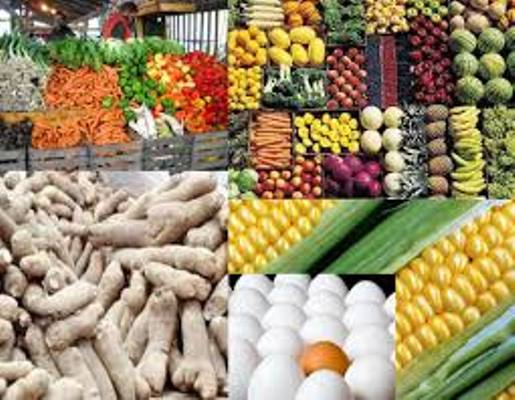There is an area in the city of Ibadan, South-West Nigeria called Moor Plantation, named after a Colonial British High Commissioner, Sir Ralph Moor.
This location which is one of the oldest agricultural stations in Nigeria, could be referred to as the hub of agricultural institutions, research outfits, as well as agriculture education and training, in the ancient city.
In order to grow cotton to feed the British Textile Mills in 1905, the British Cotton Growers Association acquired 10.35 square kilometres of land at the site known today as Moor Plantation.
Five years later, in 1910, Moor Plantation had become the headquarters of the Department of Agriculture in Southern Nigeria.
It is also home to the first college of agriculture in the country and the whole of West Africa, the Federal College of Agriculture, formerly School of Agriculture, established in 1921.
Nestled comfortably in a serene section of Moor Plantation is the National Centre for Genetic Resources and Biotechnology (NACGRAB).
NACGRAB was established in 1987 by the Federal Ministry of Science and Technology.
Its mandate is to collect and conserve valuable genetic resources for food and agriculture and ensure that they are used sustainably.
NACGRAB is host to the National Varieties Release Committee (NVRC), as the agency serves as the committee’s secretariat.
The NVRC is responsible for scrutiny, registration, approval, and release of crop and animal varieties submitted to it by agricultural scientists, plant and animal breeders, seed companies, and research institutes among others.
The work of the committee is facilitated by NACGRAB with the required manpower and technology on and off the field to ensure its objectives and goal are actualized.
Dr Sunday Aladele, the Registrar of NVRC is also the Director of NACGRAB, at present.
In the last three years (December 2019 to January 2022) the Federal Ministry of Science and Technology released a total of 76 high yield crop varieties to Nigerian farmers through the NACGRAB based committee.
This regular release of high yield crop varieties, is to boost agriculture, make food available at cheaper rates, ensure bumper harvest at short intervals, and attain the desirable level of food security for the Nigerian populace.
A breakdown shows that 11 new crop varieties were released in December 2019, another batch of 18 varieties in December 2020, while 47 varieties were just released in January 2022.
Apart from this number, a cornucopia of other high yield crop varieties have been released during 27 meetings of the committee prior to December 2019.
At the 28th meeting of NVRC in 2019, chairman of the committee, Chief Oladosu Awoyemi said that the 11 varieties mentioned above, were approved for release out of a total of 20 crop varieties initially submitted to the Technical Sub – Committee on Crops for consideration.
Further details were given by the chairman of the crops sub – committee, Prof. Olusoji Olufajo who listed the new hybrid crops varieties as six maize, two castor, two yam, and one cowpea varieties.
Among the criteria used for the release of some of the varieties were, extra earliness and high grain yield, high protein content, high pro-vitamin A content, high yield, and tolerance to multiple stress.
Others were based on high seed yield and large endosperm, high yield, high oil content, early maturity and good oil physicochemical properties, slow rate of oxidation, good taste and high dry matter.
Good processing quality and good taste, resistance to legumes pod borer and early maturity were also taken into consideration before approval and release of some of the 11 varieties.
At the 2020 meeting, which was the 29th in the series, 18 new varieties were approved out of a total of 25 varieties submitted for consideration by research institutions, universities and private seed companies.
The varieties approved for release were two sweet sorghum varieties and four multipurpose cassava varieties.
They also included, one “poundable” cassava variety, two white maize hybrids, one yellow maize variety, and two pro- vitamin A maize varieties.
Others were, one medium maturing top – cross maize variety, two maize hybrids, and three yam varieties.
Apart from the 18 released varieties, two hybrid cotton were only registered by the Committee to serve as refuge for the released Biotechnology Cotton.
The 30th meeting of NVRC in January 2022 was a memorable event as a deluge was witnessed in the number of crops approved for release.
At the occasion, one of the highest if not the highest number of varieties in the history of the NVRC, 47 varieties, were approved for release at a sitting.
The 47 varieties were from a total of 49 varieties earlier submitted to the committee.
The released crop varieties included two rice hybrids, two high protein rich Oat varieties, three Durum wheat varieties, three pro-Vitamin A hybrid cassava, and 19 maize varieties.
It is noteworthy that when plant breeders, seed companies, and scientists come to NACGRAB, they are expected to always submit what is known as the Distinct Uniformity Stability (DUS) requirements of their crop varieties with the crops.
This is being done in order to ensure extra quality of the varieties and for them to meet international standards.
This means that all crop varieties must meet the DUS requirements of being distinct, uniform and stable for acceptance not only in Nigeria but in the West African sub-region.
Developers of crop and animal varieties bringing their samples for approval and release at NACGRAB come from within and outside Nigeria.
They include, the Institute for Agricultural Research, Zaria, the Raw Materials Research and Development Council, Abuja, and the International Institute of Tropical Agriculture, Ibadan.
Other developers are, the National Root Crops Research Institute, Umudike, the University of Ilorin, the Institute of Agricultural Research and Training Ibadan; and Seed Co. Nigeria Ltd.
The International Maize and Wheat Improvement Center, Kenya, Bayer Crop Science , Petit, South Africa, and the African Agricultural Technology Foundation, Kenya are also among developers of many varieties released so far.
The diverse origin of these plant breeders, scientists, seed companies and researchers is a testimony to the quality and global standard of NACGRAB’s outputs.
The committee is also responsible for the approval and release of animals, fish, and livestock of enhanced breeds.
But, in this area, not much success has been recorded as breeders are not forthcoming with samples and the NVRC can not approve and release what is not presented before it.
However, the committee has been persistent in its call on stakeholders to submit samples of animals, livestock and fishes of improved quality to it for approval and release.
Looking at its consistent activities so far, the NVRC seems to be the foremost committee under the umbrella of NACGRAB that is strategically midwifing the food security goal of the Federal Government for the masses.
This assertion is backed by the fact that high yield crop and animal varieties derived through biotechnology have been identified by many experts, as solutions to global hunger and malnutrition.
From the foregoing, it is apparent that for over 30 years, NACGRAB have really been working tirelessly to boost Nigeria’s agricultural productivity.
Some observers are also of the view that what NACGRAB’s effort, which is in line with President Muhammadu Buhari administration’s 9-point agenda, needs; is sustainability.













